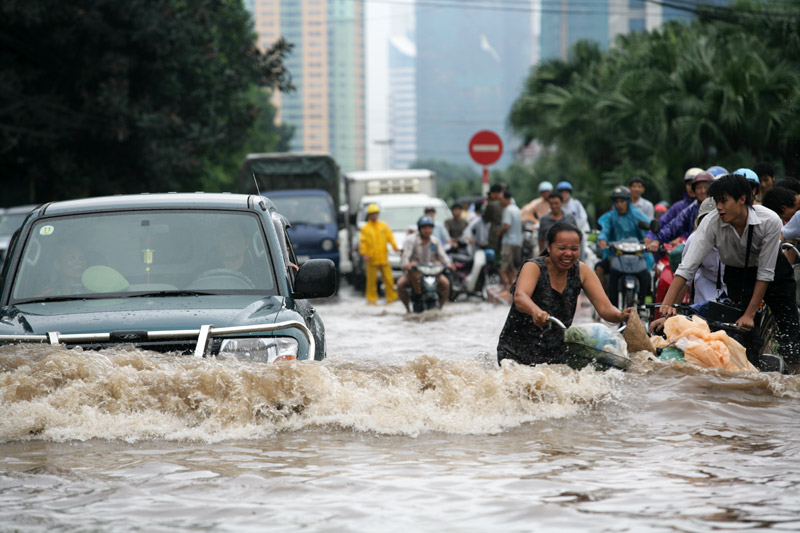Table of Content
Flood insurance can cover flood damage to your home, other structures, and your belongings. These are covered for their replacement cost up to the limits in your homeowners policy. As of 2019, there are 117,952 National Flood Insurance Program policies in place in Florida.

That depends on where you live and what your mortgage situation is like. Many mortgage lenders require flood insurance if your home is near a body of water, too. There’s no waiting period for our flood coverage, and it’s effective immediately. By comparison, the NFIP has a 30-day waiting period before coverage takes effect.
Flood Insurance Get a Flood Insurance Quote Online
Of course, all of the above factors can impact how much you’ll pay each month. A Preferred Risk Policy offers both building and contents coverage for one price, but only for homes in low-to-moderate risk areas. Some communities have implemented flooding safeguards, which qualifies them for discounts under the NFIP. Your insurance agent will be able to help you get the best price possible for your home’s coverage. One can purchase flood insurance through the National Flood Insurance Program , a federal program created by FEMA in 1968.

This information can include a property’s slopes and inclines, historical instances of flooding, year rainfall, elevation, weather patterns, and past flood insurance claims. If a property isn’t located in a high-risk floodplain, property owners still benefit from a flood insurance policy. If a homebuyer is considering a property in a Special Flood Hazard Area (“SFHA” or “100-Year Floodplain”) the mortgagee may require flood insurance, in addition to a standard homeowners policy. The average annual cost of flood insurance in the US is $958 when you buy it from the National Flood Insurance Program . Depending on which flood zone your home is in, your flood insurance rates can range anywhere from $190 to $2,000. FEMA retains responsibility for underwriting flood insurance coverage sold under that program and by the NFIP Direct.
Flood insurance - Do I need flood insurance?
Flood insurance is a type of property insurance that covers a dwelling for losses directly caused by flooding. Put simply, it’s an excess of water on land that is normally dry. Flooding is caused by heavy or prolonged rain, coastal storm surges, melting snow, blocked storm drainage systems, and even levee dam failure. Flooding can cause significant destruction to a home—and if you don’t have flood insurance, you won’t be covered against the damages to your home and belongings. It is a separate policy that goes beyond the usual coverages provided by a homeowners policy, landlord protector, or commercial insurance policy. Flood insurance serves to protect the structure and personal/business property from the specific perils of coastal flooding, flash flooding, groundwater flooding and so on.
Coverage limits, basement contents, additional living expenses, and more, can all vary drastically . If you opt for an NFIP policy, $250,000 is the maximum coverage available for your home. Most people think you only need this coverage when you live near water, but you don’t have to have a home along the coast or near a river to need it.
Flood Experts
One can also find coverage on the private flood insurance market. But where you buy flood insurance impacts your premium, too. A recent study found that 77 percent of homes in Florida could get lower rates through private flood insurance rather than the NFIP.
An unanchored fuel tank can be torn free by floodwater and the broken supply line can contaminate your basement. An outside fuel tank can be swept downstream and damage other property. If the policy already exists at this property and is being renewed with increased coverages. Homeowner B files a flood claim with his small deductible of $1,000 and gets a check for $199,000. If a property suffered flood damage 25 years ago, this doesn’t mean the property has 75 years until the next flood. 100-Year Floodplains (also called 100-year flood zones) are areas that experience about a 1% chance of flooding every year.
The Home Program is underwritten by Hartford Insurance Company of the Southeast. Your furnace, water heater, washer and dryer should all be 12 inches from your basement floor. To raise them to this level, place them on top of masonry blocks, concrete, or pressure-treated lumber. Downspouts should carry water several feet away from your property to a well-drained area. Insurance solutionsto protect businesses from the unexpected.

No wait for property sales involving a loan, but if you paid cash for your house, 30 day wait. For complete hurricane insurance coverage, you could potentially need three types of insurance. Luckily, each policy for hurricane insurance will cover these high-cost damages on your most important investment—your home.
Find information on the Write-Your-Own program, reinsurance, Risk Rating 2.0, plus the Flood Insurance Manual and other tools. The National Flood Insurance Program provides insurance to help reduce the socio-economic impact of floods. Personal property, including clothing, furniture, and electronic equipment that isn’t stored in the basement. The Hartford offers National Flood Insurance Program coverage to AARP members. Since rates are the same, additional value comes in choosing a company that provides exceptional service.
When signing a 30-year note, the buyer must renew the flood insurance policy every year for the next three decades, or until the mortgage is paid in full. While you can’t purchase flood insurance directly from the National Flood Insurance Program, you can purchase flood insurance directly from Kin. Just apply for a flood insurance quote online – we’ll handle the rest.
This coverage includes rental homes, as well as those in high-risk flood areas. The actual insurance policies are not issued by the NFIP or FEMA. Instead, they’re available through most major insurance companies—and some offer private flood insurance that can supplement NFIP coverage. Flood policies are sold through licensed insurance agents.
Please keep in mind that a new flood insurance policy or an increase in coverage will not take effect until 30 days after it was requested. So it’s not possible, for instance, to obtain flood insurance as soon as threatening weather is forecasted. There are some exceptions to the waiting period, such as insuring a newly purchased home or if you’re refinancing and flood insurance is required by the mortgagee.

No comments:
Post a Comment